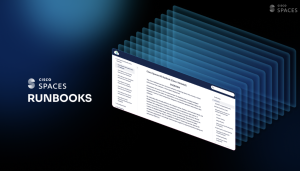
Understanding and catering to customer preferences has become critical in the ever-evolving retail space. And the retail industry has started relying on indoor location services to transform the customer experiences it delivers.
Indoor location services utilize technologies like Wi-Fi networks, Bluetooth Low Energy (BLE) and RFID tags to provide accurate location data within a physical space. This data translates as valuable insights on customer movement, buyer behavior, and preferences within the retail space. Analyzing all this information helps retailers arrive at data-driven decisions to improve various aspects of their operations – from marketing and customer engagement to store layout optimization and employee management. Let’s take a closer look at how retail location analytics improves customer experiences.
Wi-Fi Onboarding: The First Impression
Seamless Wi-Fi onboarding is the first step towards elevating the customer experience in a retail environment. Traditionally, visitors had to go through the process of connecting to the store’s Wi-Fi network by manually entering credentials. However, with auto onboarding, customers can automatically connect without any manual input, making store entry smoother and shopping convenient.
Retailers can also use captive portals to offer a personalized onboarding experience that can include branded messages and special offers. For example, a store can offer exclusive discounts to frequent customers who have previously connected to their Wi-Fi network. This is a great way to encourage shoppers to connect again and stay engaged with the brand.
By integrating with customer relationship management (CRM) systems, retailers can acquire valuable customer information during the onboarding process.
In-Store Behavior Analytics: Understanding Customer Preferences
Retail location analytics provides retailers with a comprehensive overview of customer behavior within their stores. By analyzing data on customer preferences, dwell times, busiest days of the week, and more, retailers can learn how customers engage with their physical stores. This information enables retailers to make informed decisions about store operations, marketing strategies, and merchandising efforts that eventually impact the overall customer experience.
By understanding visit duration and frequency, retailers can optimize staffing schedules and ensure adequate customer assistance during peak times. They can analyze trends and compare performances of different store locations, to identify areas of improvement. Analytics also allows retailers to measure the impact of events or interventions on customer behavior.
For instance, analytics can reveal how much an event, such as a sale or special promotion, drove foot falls and spending. By measuring this impact, a retailer can determine whether they should continue or discontinue the sale. It can also help gauge the effectiveness of an in-store layout change.
Visitor Profiling & Engagement: Personalized Messaging
Indoor location analytics enables retailers to segment and profile customers based on in-store behavior. Specific personas such as first-time visitors, frequent visitors, rewards club members, or customers who spend time in specific product aisles, can be identified. Then, retailers can deliver personalized, location-based messaging to each persona, via multiple channels such as Push Notifications, SMS, Email, API trigger.
For example, a retailer can send a Push Notification to all frequent visitors within the store and offer them a discount on their next purchase. Or, first-time shoppers can be offered an in-store tour to help them find what they need more easily. This can help the retailer hook new customers on their brand while also increasing sales.
Retail Location Analytics with Cisco Spaces
Cisco Spaces has been reviewed by customers on Gartner Peer Insights and ranked as the best indoor location services platform for four years in a row. It offers a comprehensive set of solutions tailored for retail environments.
With Spaces, retailers can transform their buildings into smart stores that deliver smarter, safer, and seamless experiences for customers. Spaces provides solutions for Wi-Fi onboarding, in-store behavior analytics, visitor segmentation, and engagement, as well as operational efficiency enhancements. All of this can be leveraged using existing Cisco network infrastructure. Notable retailers who use Cisco Spaces solutions include Canary Wharf Group, Westfield and Intu.
Learn more about retail location analytics and how they can help transform your customer experiences.



